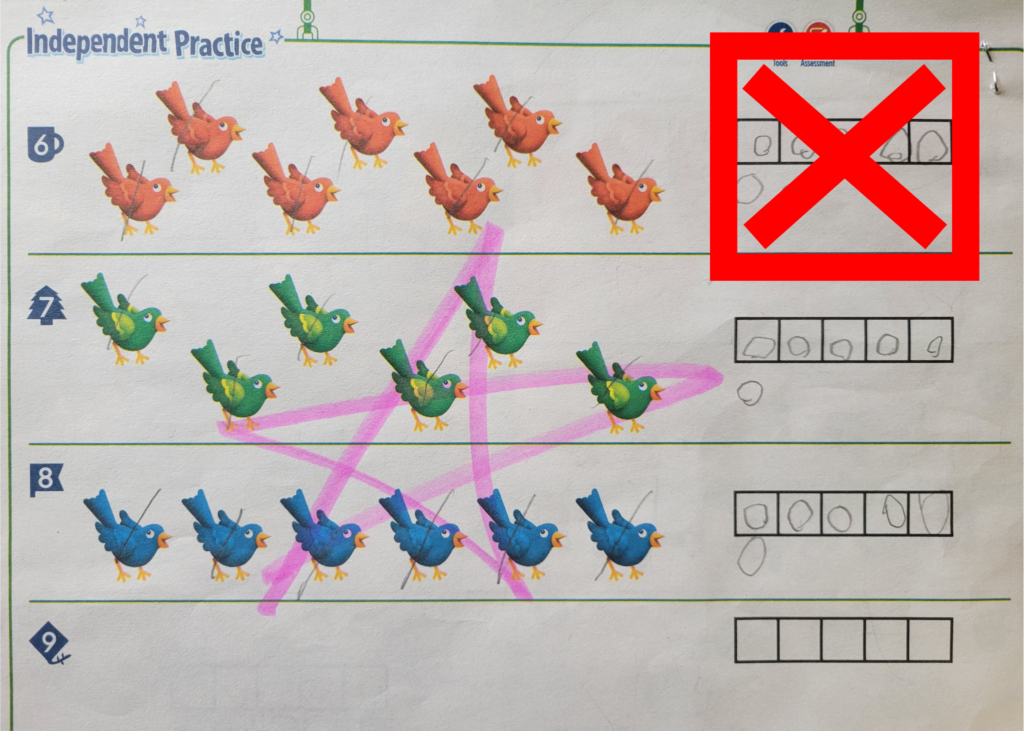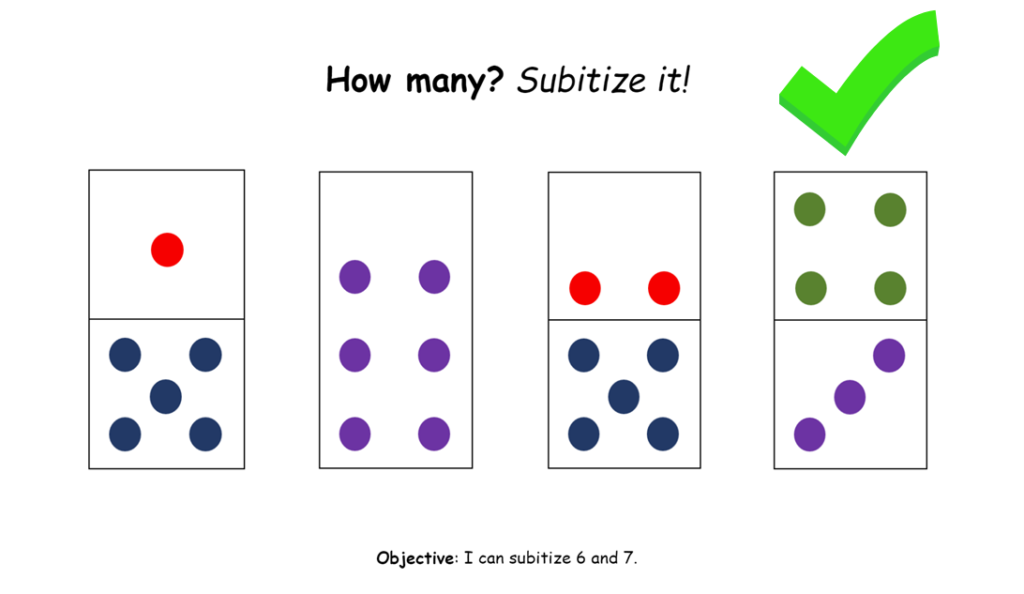“Visuals in math curriculum are often entertaining, not educational” – (paraphrased from Steve Chinn)
The birds are cute, but do they develop number sense?


The science of math shows that number sense is based on our ability to subitize, not our ability to count. Yet most math curriculum uses images that encourage counting, not subitizing. This to me is where we are fundamentally going awry in math instruction.
Subitizing is an ability we are all born with – even animals have it – and it means we can see small quantities and just know how much they are, without counting. Subitizing generally goes up to about 4 or 5, then larger numbers are figured out by breaking them into smaller subitizable amounts. Subitizing is an ability we are born with, that develops over time, and can be strengthened with instruction.
Research on subitizing shows it is easiest when the objects are simple and arranged into standard 2-dimensional patterns, such as dice arrangements. The goal is to create visual images for each number that can be stored in memory, so that numbers have meaning. For most children counting objects does not create this visual memory.
So what do I recommend instead? Here’s my worksheet re-make:
- The objective of this practice sheet says “I can count the numbers 6 and 7.” Instead, let’s make it “I can subitize the numbers 6 and 7.”
- Instead of telling kids to “Count how many”, just ask “How many?” You can tell them what subitizing is, or for an easier word, instruct them to just “Spot it!” if they can, without counting.
- Use these standard dot patterns instead, shown on the worksheet re-do. The goal is to see these regularly enough that they become familiar and encoded into visual memory.
- These standard dot patterns also facilitate addition and subtraction because kids learn to see 7 as 5 dots and 2 dots, or 4 dots and 3 dots, etc.
